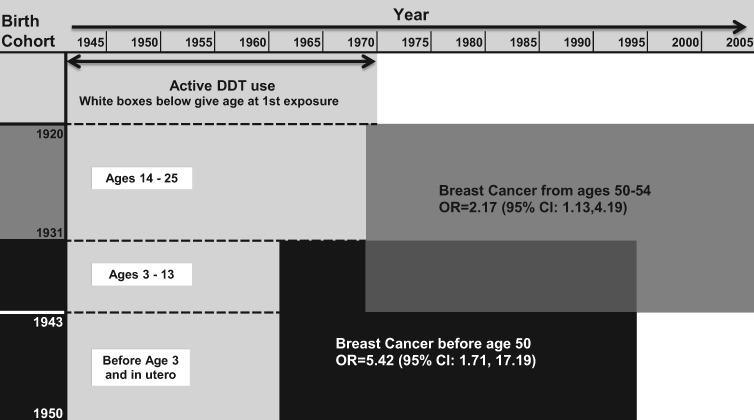Figure 2.
p, p’-DDT associated breast cancer by age at first exposure and age at diagnosis. The y-axis corresponds to study birth cohorts. The x-axis corresponds to calendar year. The light grey area indicates years of DDT use showing that all birth cohorts were DDT-exposed but first exposure occurred at different ages. White boxes show age at first exposure for relevant birth cohorts. The black box corresponds to birth cohorts diagnosed with breast cancer before age 50 years who were first exposed to DDT from in utero to age 13 years. The dark grey area corresponds to birth cohorts diagnosed from ages 50-54 years who were first exposed after infancy. Findings support that intrauterine and early infant p, p’-DDT exposure increases risk of premenopausal breast cancer, whereas p, p’-DDT exposure after infancy increases breast cancer risk in the early menopausal years. ORs and 95% CIs were estimated from conditional logistic regression models as described in Table 2.

